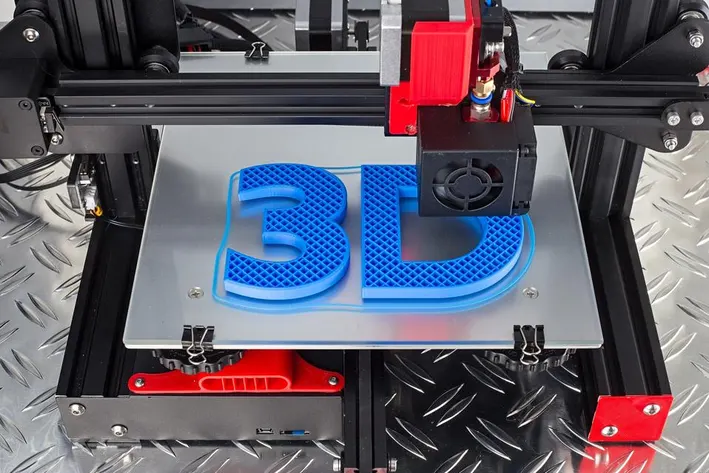Anúncios
The scientific landscape is evolving. With the advent of 3D printing, research is no longer confined to traditional methodologies. The once unimaginable is now within reach, opening up a world of infinite possibilities. This post delves into the profound impacts of 3D printing in the realm of scientific research.
The power of 3D printing in research extends far beyond creating physical prototypes. It has paved the way for intricate models of organic structures, tissue engineering, and even the potential creation of artificial organs. This paradigm shift is fundamentally reshaping how research is conducted, enabling scientists to experiment in ways never before possible.
Anúncios
Our exploration of 3D printing’s impact on science will highlight how this technology has revolutionized medical research, material science, archaeology, and more. We will uncover how 3D printing is not just a tool, but a game changer, driving innovation and expanding the horizons of scientific discovery. 🧪🔬
Stay with us as we journey through the transformational role of 3D printing in research. From its applications in healthcare to its contributions in space exploration, the impacts are far-reaching and incredibly exciting. Get ready to have your perspective of science and research irrevocably altered!
Anúncios
Materials and Processes in 3D Printing
A broad range of materials can be used in the 3D printing process, including plastics, metals, ceramics, and even biological materials like cells and tissues. The diversity of usable materials opens up possibilities for numerous applications in scientific research, from the development of prototypes and models to the fabrication of functional, custom-designed parts and devices.
The 3D printing process typically involves the creation of a digital model of the object to be printed, using computer-aided design (CAD) software. The 3D printer then reads this digital file and lays down successive layers of material to build the object from the bottom up.
Applications of 3D Printing in Scientific Research
The advent of 3D printing in scientific research has revolutionized how experiments are conducted and innovations are tested. By allowing scientists to fabricate complex structures layer by layer from a digital model, 3D printing—also known as additive manufacturing—offers unprecedented flexibility and precision. This technology empowers researchers to rapidly prototype custom tools, replicate biological structures, and create intricate components that would be difficult or impossible to produce using traditional manufacturing methods. As a result, 3D printing is not just a technical advancement, but a transformative force expanding the frontiers of scientific inquiry.
Biomedical Research and Healthcare
In the field of biomedical research and healthcare, 3D printing has emerged as a groundbreaking tool, offering innovative solutions to long-standing challenges. One of the most impactful applications is the creation of highly accurate models of human organs. These models allow medical students, surgeons, and researchers to study complex anatomical structures in detail and practice surgical procedures in a risk-free environment. Such models can even be customized based on patient-specific data from MRI or CT scans, enhancing pre-surgical planning and improving outcomes.

Perhaps even more revolutionary is the development of bioprinting—a subset of 3D printing that involves the layering of living cells and biomaterials to create functional tissues. Scientists are already bioprinting skin, cartilage, and vascular structures in laboratory settings. While printing fully functional organs like hearts or kidneys remains a complex challenge, significant strides are being made toward this goal. Bioprinting holds immense potential for regenerative medicine, where damaged tissues can be replaced with bioengineered ones, potentially reducing the dependency on organ donors and eliminating risks of organ rejection. As this technology continues to advance, it may redefine the future of healthcare by making personalized, lab-grown tissues and organs a reality.
Archeology and Paleontology
In the fields of archaeology and paleontology, 3D printing has ushered in a new era of research, preservation, and public engagement. Traditionally, handling ancient artifacts and delicate fossils posed significant risks, as physical contact or environmental exposure could lead to deterioration. However, 3D printing technology has changed the game by enabling researchers to scan and replicate these items with extraordinary precision, all without harming the original specimens.
Using techniques like laser scanning and photogrammetry, detailed 3D models of artifacts and fossils are created digitally. These models are then printed to produce accurate, tangible replicas that can be studied up close or used for hands-on education. This process allows scientists to examine fine structural details that may not be visible to the naked eye and to share exact copies with other researchers around the globe, encouraging collaboration without risking fragile originals.
Additionally, these replicas are invaluable for museums and educational institutions. Visitors can now interact with realistic models of ancient tools, bones, or fossils, enhancing the learning experience and making history more engaging and accessible. In some cases, damaged or incomplete artifacts can be digitally reconstructed and printed to better visualize how they may have originally looked or functioned.
In paleontology, 3D printed fossils help researchers test hypotheses about biomechanics, such as how a dinosaur might have moved or fed. These models can be scaled or modified to simulate various scenarios, offering insights that would be impossible to gain from fragile fossils alone. As the technology continues to evolve, the use of 3D printing in archaeology and paleontology will undoubtedly deepen our understanding of ancient life and human history.
Chemistry and Material Science
In chemistry and material science, 3D printing has become a transformative tool, redefining how experiments are designed, conducted, and advanced. Traditionally, researchers have been limited by the availability of standardized laboratory equipment and the challenges of creating intricate material structures. However, 3D printing has introduced a level of customization and precision that is unlocking new possibilities across these disciplines.
One of the most notable applications in chemistry is the fabrication of custom labware—specialized reactors, mixers, flow cells, and containers tailored to specific experiments. Using 3D modeling software, chemists can design equipment with highly specific dimensions, fluid channels, or surface textures to control reaction conditions with greater accuracy. This adaptability is particularly beneficial in microfluidics, where precise control over the movement of tiny volumes of liquid is essential.
Material scientists, on the other hand, are leveraging 3D printing to develop and test novel materials with complex geometries and engineered microstructures that were once impossible to produce using traditional methods. These structures include porous frameworks, lattices, and biomimetic designs that emulate natural forms—ideal for lightweight construction, heat resistance, or enhanced mechanical properties. For example, researchers can now create metal-ceramic composites with carefully tuned gradients of composition and density, leading to advanced materials for aerospace, automotive, and medical applications.
Furthermore, 3D printing is accelerating the development of smart materials—substances that respond to external stimuli such as heat, light, or electricity. By integrating these materials into 3D-printed structures, scientists are experimenting with self-healing surfaces, shape-shifting devices, and flexible electronics. The ability to embed sensors directly into printed components also supports the development of “lab-on-a-chip” systems for diagnostics and environmental monitoring.
Importantly, 3D printing also promotes sustainable research practices. It allows for rapid prototyping and iterative design, reducing waste and the need for mass production. Some labs are even exploring biodegradable or recycled printing materials, aligning with green chemistry principles.
In essence, the marriage of 3D printing with chemistry and material science is fostering a new era of innovation—one where experimentation is faster, more flexible, and infinitely more creative. As the technology evolves, we can expect even more breakthroughs that challenge the boundaries of what’s physically and chemically possible.
The Future of 3D Printing in Science
The impact of 3D printing on scientific research is only beginning to be felt, and its potential applications are vast and varied. As the technology continues to evolve and become more refined, its role in scientific discovery is likely to grow.

Advancements in Materials and Technology
As 3D printing technology continues to advance, we can expect to see an expansion in the range of materials that can be used, as well as improvements in the precision and reliability of the printing process. These advancements will further expand the scope of potential applications in scientific research.
3D Printing and Data Sharing
Another promising aspect of 3D printing in science is its potential to facilitate collaboration and data sharing. Researchers can easily share digital models for 3D printing, allowing their colleagues around the world to replicate their work and build upon it. This could significantly accelerate the pace of scientific discovery.
Challenges and Ethical Considerations
Despite its many benefits, the use of 3D printing in scientific research raises a number of challenges and ethical considerations that warrant careful attention. As this technology becomes more deeply integrated into various fields, questions surrounding its regulation, safety, and social impact have emerged.

One major concern is regulatory oversight. In sectors like medicine and biotechnology, 3D-printed items—such as prosthetics, implants, or even bioprinted tissues—must meet rigorous safety standards. However, the rapid pace of innovation often outpaces existing regulatory frameworks, creating gaps in quality assurance. Without clear guidelines, the risk of variability in product performance and safety increases, especially when devices are produced outside traditional manufacturing systems.
Another significant issue is intellectual property (IP). The ease with which digital files can be shared and replicated raises concerns about copyright infringement and unauthorized use of patented designs. Researchers must navigate a complex landscape of IP rights while balancing the collaborative spirit that 3D printing enables. Open-source sharing, while beneficial for scientific progress, may also inadvertently lead to misuse or misappropriation of proprietary information.
Bioethical considerations come into play particularly in the realm of bioprinting. As researchers explore the creation of living tissues and potentially entire organs, questions arise regarding consent, commodification of the human body, and the moral limits of manipulating life. The possibility of printing human-like tissues or body parts prompts deeper debate about personhood, identity, and the definition of life itself.
Furthermore, access and equity are pressing ethical issues. While 3D printing holds promise for democratizing science and medicine, disparities in access to the technology can exacerbate existing inequalities. Institutions in wealthier nations may accelerate innovation, while those in developing regions struggle to obtain or maintain such equipment, widening the global research divide.
Lastly, environmental sustainability must be considered. Although 3D printing can reduce waste compared to traditional manufacturing, it still involves energy-intensive processes and materials—some of which are non-biodegradable or toxic. Responsible sourcing, material recycling, and lifecycle assessments are necessary to ensure that this powerful tool aligns with sustainability goals.
In summary, while 3D printing holds immense promise for advancing science, its ethical and practical challenges must be addressed thoughtfully. Responsible innovation, coupled with transparent policies and inclusive practices, is key to harnessing its full potential while safeguarding societal values.
Regulation and Quality Control
In fields such as medicine and healthcare, issues of regulation and quality control are paramount. Ensuring that 3D printed organs, tissues, and medical devices meet safety and efficacy standards is a complex task that requires careful oversight.
Intellectual Property and Access
The ease with which digital models for 3D printing can be shared also raises questions about intellectual property rights. At the same time, ensuring that researchers in less affluent countries have access to 3D printing technology is an important equity consideration.
In conclusion, the impact of 3D printing on scientific research is profound and far-reaching. As we continue to explore the potential of this technology, it’s crucial to navigate these challenges and ensure that its benefits are widely shared.
Conclusion
The influence of 3D printing in science is not only revolutionary but also transformative, setting the stage for unprecedented advancements in research and development. This innovative technology is reshaping scientific exploration, breaking down barriers to creativity, and paving the way for more streamlined, efficient, and accurate research processes. It is evident that 3D printing has a profound impact, fostering an environment of limitless possibilities in various scientific disciplines, from biology and medicine to physics and engineering. It acts as a catalyst for change, accelerating the transition from theoretical research to practical application, consequently expediting scientific breakthroughs. Despite the challenges it may present, the benefits it offers are indubitable and far-reaching. Therefore, the integration of 3D printing into science signifies a colossal leap towards the future of research, underscoring its potential in driving scientific progress. As we continue to harness the power of this technology, we can look forward to a future where science and technology converge to create solutions to the world’s most pressing problems. Thus, the impact of 3D printing in science is indeed revolutionary, facilitating a new era of research and discovery.

